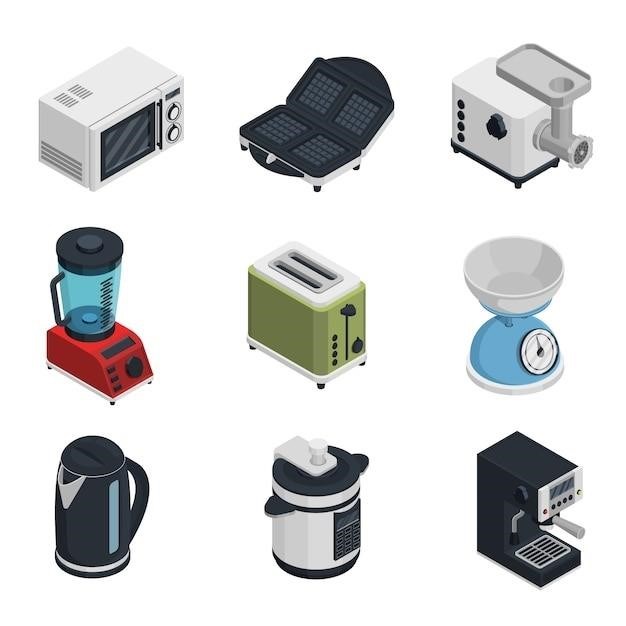Husqvarna YTH22V46⁚ A Comprehensive Guide
This comprehensive guide provides a detailed overview of the Husqvarna YTH22V46, a popular riding lawnmower designed for residential use. From its key features and specifications to operation, maintenance, and troubleshooting, this guide aims to equip users with the necessary information to understand and utilize this powerful lawn care tool effectively. Whether you’re a seasoned homeowner or a first-time mower owner, this guide serves as a valuable resource for maximizing the performance and longevity of your Husqvarna YTH22V46.
Introduction
The Husqvarna YTH22V46 is a powerful and versatile riding lawnmower designed for residential use. This machine is a popular choice among homeowners seeking a reliable and efficient solution for maintaining their lawns. The YTH22V46 boasts a robust 22 horsepower engine, a spacious 46-inch cutting deck, and a hydrostatic transmission, making it capable of handling even the most challenging lawns. With its adjustable cutting height, electric start, and comfortable operator seat, this lawnmower offers a convenient and user-friendly experience. This guide will delve into the key features, specifications, operation, maintenance, troubleshooting tips, and accessories of the Husqvarna YTH22V46, providing you with comprehensive insights into this powerful lawn care tool. By understanding the intricacies of this machine, you can maximize its performance, ensure its longevity, and enjoy a smooth and efficient mowing experience.
Key Features and Specifications
The Husqvarna YTH22V46 is packed with features that make it a powerful and efficient lawnmower. Its key features include a robust 22 horsepower engine, a spacious 46-inch cutting deck, and a hydrostatic transmission that provides smooth and seamless speed control. The cutting height is adjustable, allowing you to achieve the desired grass length. For added convenience, the YTH22V46 comes equipped with an electric start, eliminating the need for manual pulling. Its generous fuel capacity of 2.5 gallons minimizes the need for frequent refueling during extended mowing sessions. The YTH22V46 also features a comfortable high-back seat and a cup holder for added operator comfort. Here’s a breakdown of its key specifications⁚
- Engine⁚ Briggs & Stratton INTEK V-Twin
- Horsepower⁚ 22 hp
- Cutting Deck⁚ 46-inch
- Cutting Height⁚ Adjustable, 1.5 to 4 inches
- Transmission⁚ Hydrostatic
- Fuel Capacity⁚ 2.5 gallons
- Maximum Forward Speed⁚ 5.5 mph
These specifications highlight the YTH22V46’s powerful performance, ease of use, and operator comfort, making it a top choice for maintaining lawns of varying sizes.
Engine and Transmission
The Husqvarna YTH22V46 is powered by a Briggs & Stratton INTEK V-Twin engine, known for its durability and reliability. This two-cylinder engine provides ample power for tackling even the most demanding lawn care tasks. The engine features full-pressure lubrication, an advanced debris management system, and a mechanical compression release for reliable starting. The YTH22V46’s hydrostatic transmission offers smooth and seamless speed control, allowing for easy maneuverability on varying terrains. Unlike gear-based transmissions, the hydrostatic system provides infinite speed control, eliminating the need for gear shifting and allowing for precise adjustments. The hydrostatic transmission also features a freewheel control that enables the operator to disengage the drive system for easy maneuvering in tight spaces or when the tractor is not in use.
The combination of a powerful Briggs & Stratton INTEK V-Twin engine and a responsive hydrostatic transmission makes the Husqvarna YTH22V46 a capable and user-friendly lawnmower, ensuring a smooth and efficient mowing experience. The engine provides the necessary power for optimal cutting performance, while the hydrostatic transmission allows for precise speed control and effortless maneuverability, making it a versatile tool for various lawn care needs.
Cutting Deck and Height Adjustment
The Husqvarna YTH22V46 features a 46-inch cutting deck, providing a wide cutting path for efficient and timely lawn maintenance. This spacious cutting deck allows for covering larger areas with fewer passes, reducing the time and effort required for mowing. The cutting deck is made of durable steel, designed to withstand the rigors of regular use and provide long-lasting performance. The YTH22V46 offers adjustable cutting heights, allowing users to customize the grass length to their preference. The cutting height can be easily adjusted with a convenient lever, offering a range of settings from 1.5 to 4 inches. This versatility enables users to achieve their desired grass height, whether it’s a neat and trimmed look or a longer, more natural appearance. The cutting deck is also equipped with a mulching option, which allows for finely chopped grass clippings to be returned to the lawn as a natural fertilizer. This mulching feature promotes a healthy lawn by providing essential nutrients and reducing the need for chemical fertilizers.
The combination of a spacious cutting deck, adjustable cutting heights, and mulching capability makes the Husqvarna YTH22V46 a versatile and efficient lawnmower, offering a wide range of cutting options to meet the diverse needs of homeowners. Whether aiming for a perfectly manicured lawn or a more natural, unkempt look, the YTH22V46 provides the necessary tools for achieving the desired results.
Safety Features
The Husqvarna YTH22V46 is designed with a comprehensive set of safety features to protect both the operator and bystanders during operation. A prominent safety feature is the blade engagement system, which prevents accidental blade activation. The blade only engages when the operator is seated and the transmission lever is in the drive position. Additionally, the YTH22V46 is equipped with a parking brake that automatically engages when the transmission lever is in the neutral position. This ensures that the tractor remains stationary when not in use, preventing unintended movement and potential hazards. The mower deck is equipped with a safety shield that prevents objects from being ejected from the deck during operation. This shield helps protect bystanders from flying debris, enhancing the overall safety of the mowing process.
The operator seat is designed to provide a comfortable and secure position for the operator, enhancing control and reducing fatigue during extended mowing sessions. Furthermore, the YTH22V46 features a safety switch that automatically stops the engine if the operator leaves the seat during operation. This safety mechanism ensures that the tractor is not left unattended while running, minimizing the risk of accidents or injuries. The Husqvarna YTH22V46 incorporates a comprehensive range of safety features to ensure the well-being of the operator and surrounding individuals during operation. The combination of these safety measures makes the YTH22V46 a reliable and secure lawnmower for homeowners, promoting a safe and enjoyable mowing experience.
Operation and Maintenance
Operating the Husqvarna YTH22V46 is a straightforward process, but it’s essential to familiarize yourself with the user manual for proper usage and maintenance. Before starting the engine, ensure the fuel tank is adequately filled with gasoline, and check the oil level. Engage the parking brake and sit on the seat before starting the engine. To start the engine, turn the key to the “ON” position and press the electric start button. The engine will start and idle. To move the tractor, engage the transmission lever and select the desired speed. Use the steering wheel to maneuver the tractor.
Regular maintenance is crucial for the optimal performance and longevity of your YTH22V46. After each use, clean the cutting deck and remove any grass clippings or debris. Check the engine oil level regularly and add oil as needed. Inspect the cutting blades for sharpness and replace them if necessary. Clean or replace the air filter as needed. Additionally, inspect the belts and hoses for wear or damage and replace them if required. If you notice any unusual noises or vibrations during operation, consult the user manual or a qualified technician for troubleshooting. Following these maintenance guidelines will help ensure your YTH22V46 operates efficiently and safely for years to come.
Troubleshooting Common Issues
While the Husqvarna YTH22V46 is designed for reliability, you may encounter occasional issues during operation. Here are some common problems and their potential solutions⁚
If the engine fails to start, ensure the fuel tank is full, the fuel line is not clogged, and the spark plug is in good condition and properly connected. Check if the parking brake is engaged and the seat is occupied before attempting to start the engine. If the engine runs but lacks power, inspect the air filter for blockage and clean or replace it if necessary. Also, check the fuel lines for any kinks or restrictions.
If the cutting deck is not engaging, ensure the cutting deck lever is in the “ENGAGED” position. Check the belt for wear or damage and replace it if needed. If the cutting deck is vibrating excessively, check the cutting blades for balance and sharpness. Ensure all bolts and screws on the cutting deck are securely tightened;
If the tractor is not moving, make sure the transmission lever is in the desired position, and the freewheel control is engaged. Check the transmission fluid level and top it off if necessary. If the tractor is making unusual noises, inspect the belts and hoses for wear or damage. If the problem persists, consult the user manual or a qualified technician for further troubleshooting.
Accessories and Attachments
The Husqvarna YTH22V46 is compatible with a range of accessories and attachments, allowing you to enhance its functionality and customize it for your specific lawn care needs. These accessories can help you achieve a more efficient and effective mowing experience, as well as handle additional tasks around your yard.
One popular accessory is the mulching kit, which allows you to finely chop grass clippings and return them to the lawn as natural fertilizer. This promotes healthier grass growth and reduces the need for chemical fertilizers. You can also find a variety of baggers, which collect grass clippings and other debris for easy disposal.
For those who need to transport materials around their yard, there are optional trailers that can be attached to the tractor. These trailers come in various sizes and capacities, allowing you to haul tools, supplies, or even small loads of mulch or topsoil. Additionally, there are snow blower attachments that can be used to clear snow from your driveway or walkways during the winter months.
Before purchasing any accessories, ensure they are compatible with your specific Husqvarna YTH22V46 model. Consult the user manual or contact Husqvarna customer support for guidance on selecting the right attachments for your needs.
Warranty Information
The Husqvarna YTH22V46 comes with a manufacturer’s warranty that protects against defects in materials and workmanship for a specified period. The exact terms and conditions of the warranty may vary depending on your region and the date of purchase. It’s crucial to carefully review the warranty documentation that came with your mower or is available on the Husqvarna website.
The warranty typically covers major components like the engine, transmission, cutting deck, and other essential parts. However, it may not cover damage caused by misuse, neglect, or improper maintenance. It’s essential to follow the recommended maintenance procedures outlined in the user manual to ensure your warranty remains valid.
If you encounter any issues with your Husqvarna YTH22V46 that fall under the warranty coverage, you should contact your local Husqvarna dealer or authorized service center. They will assist you with warranty claims and repairs. Keep your original purchase receipt and any relevant documentation handy as proof of purchase when filing a warranty claim.
User Reviews and Feedback
User reviews and feedback provide valuable insights into the real-world performance and user experience of the Husqvarna YTH22V46. While individual experiences may vary, reviewing user feedback can help potential buyers make informed decisions and understand common strengths and potential drawbacks of the mower.
Many users praise the Husqvarna YTH22V46 for its powerful engine, smooth hydrostatic transmission, and ease of use. They appreciate its ability to handle various terrains and its adjustable cutting height, allowing for precise lawn care. Some users highlight the comfortable seat and ergonomic steering wheel, contributing to a pleasant mowing experience.
However, some users have reported issues with the mower’s durability, particularly concerning the cutting deck and transmission. Others have mentioned concerns about the mower’s noise levels or the need for occasional maintenance. It’s essential to weigh the positive and negative feedback and consider your individual needs and expectations when evaluating the Husqvarna YTH22V46.
Where to Find the Manual
Accessing the user manual for your Husqvarna YTH22V46 is crucial for understanding its operation, safety precautions, and maintenance procedures. Several resources are available to obtain the manual, ensuring you have the necessary information at your fingertips.
The most direct source is the official Husqvarna website. By navigating to the “Support” or “Downloads” section, you can typically search for your specific model number (YTH22V46) and download the manual in PDF format. This ensures you have the latest version and ensures accuracy.
Alternatively, online platforms such as ManualsOnline, Sears Parts Direct, and Manua.ls offer a wide range of user manuals, including those for Husqvarna products. These platforms often provide a search function where you can enter the model number and retrieve the manual.
Finally, if you purchased your Husqvarna YTH22V46 from a retailer, you can often request a printed copy of the manual from their customer service department. This option might be helpful if you prefer a physical copy for easy reference.
The Husqvarna YTH22V46 is a powerful and versatile riding lawnmower designed to simplify lawn care for residential users. By understanding its key features, operation, and maintenance procedures, you can maximize its efficiency and longevity. This comprehensive guide has provided valuable insights into the YTH22V46’s capabilities and addressed common questions and concerns.
Remember, the user manual is your primary resource for obtaining detailed information about your mower. Familiarize yourself with its contents to ensure safe and effective operation. Regular maintenance, including oil changes, blade sharpening, and cleaning, will contribute to the long-term performance of your Husqvarna YTH22V46.
With proper care and understanding, the Husqvarna YTH22V46 can be a reliable companion for maintaining a well-manicured lawn, allowing you to enjoy your outdoor space to the fullest.
FAQs

Here are some frequently asked questions about the Husqvarna YTH22V46, along with their answers, to help you navigate common queries and concerns⁚
Q⁚ What is the recommended cutting height for my lawn?
A⁚ The ideal cutting height depends on your grass type and personal preference. Generally, a height of 3 to 4.5cm is suitable for most lawns.
Q⁚ How often should I mow my lawn?
A⁚ Mowing frequency depends on the season and grass growth rate. Mow weekly in the spring and once every two weeks during the summer.
Q⁚ Can I mow my lawn when it’s wet?

A⁚ It’s best to avoid mowing wet grass as it can lead to clumping and clogging of the mower. Wait for the grass to dry for optimal results.
Q⁚ What should I do if my mower won’t start?
A⁚ Ensure the fuel tank is full, the fuel line is clear, the spark plug is in good condition and connected, and the parking brake is engaged. Then, sit on the seat and attempt to start the engine.
Q⁚ How do I adjust the cutting deck height?
A⁚ Locate the cutting height adjustment lever on the mower deck and move it to the desired position. Ensure the blades are sharp and replace them if necessary.
Q⁚ How do I adjust the drive control?
A⁚ The transmission lever controls the speed. Move it to the desired position for forward, reverse, or neutral. Avoid sudden changes in speed to prevent damage.
Q⁚ What should I do if my mower is vibrating excessively?
A⁚ Check for damaged or unbalanced blades, loose bolts or screws, and inspect the engine for any issues. Consult a professional if the problem persists.
Q⁚ How do I prepare my mower for winter storage?
A⁚ Clean the cutting deck, check the oil level, drain the fuel tank or add stabilizer, and store the mower in a dry and sheltered area.
Additional Resources
Beyond this guide, there are several valuable resources available to further enhance your understanding and ownership experience with the Husqvarna YTH22V46⁚
Official Husqvarna Website⁚ Visit the official Husqvarna website for comprehensive information about the YTH22V46, including product specifications, accessories, and warranty details. You can also access user manuals, troubleshooting tips, and contact customer support for assistance.
Online Forums and Communities⁚ Connect with other Husqvarna YTH22V46 owners in online forums and communities to share experiences, ask questions, and find solutions to common problems. You can gain insights from fellow users and benefit from their expertise.
YouTube Tutorials⁚ YouTube offers a wealth of informative videos demonstrating various aspects of using and maintaining the YTH22V46. Search for tutorials on topics such as starting the engine, adjusting the cutting deck, troubleshooting common issues, and performing routine maintenance.
Local Dealerships⁚ Reach out to your local Husqvarna dealership for personalized support. They can provide expert advice, offer parts and accessories, and assist with any repairs or maintenance needs.
Repair Manuals and Parts Diagrams⁚ Access online repair manuals and parts diagrams for the YTH22V46 to understand the internal workings of the mower and identify specific components. These resources can be helpful for troubleshooting issues and ordering replacement parts.
By leveraging these additional resources, you can gain a deeper understanding of the Husqvarna YTH22V46, effectively address any challenges you may encounter, and maximize its performance and longevity.



























